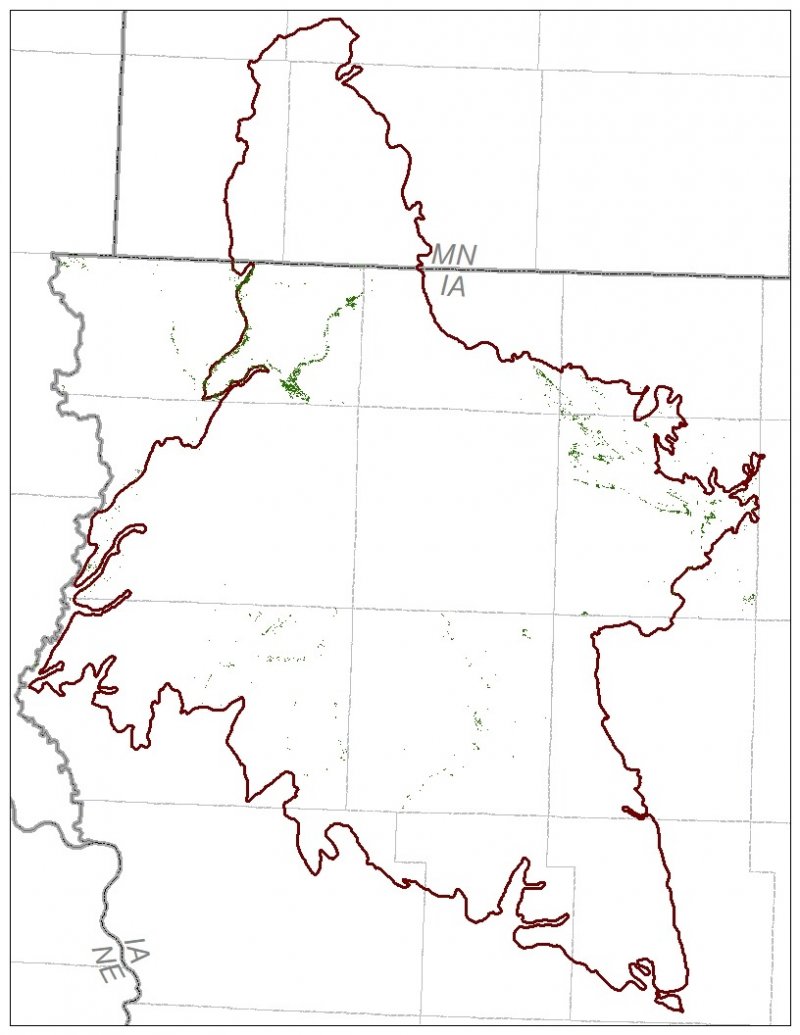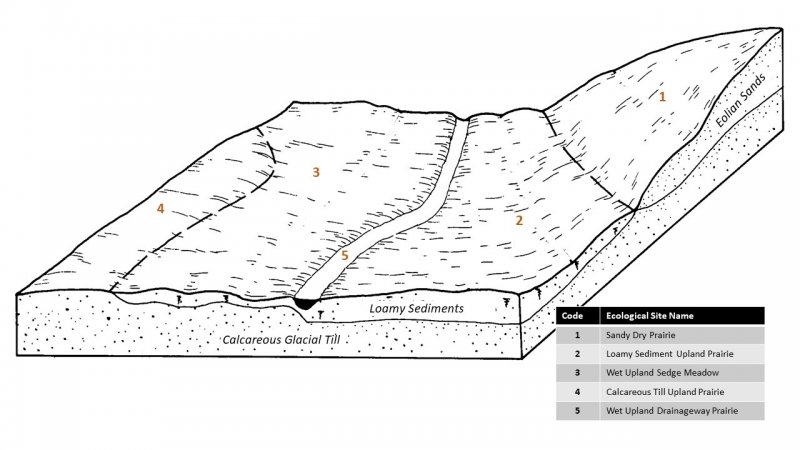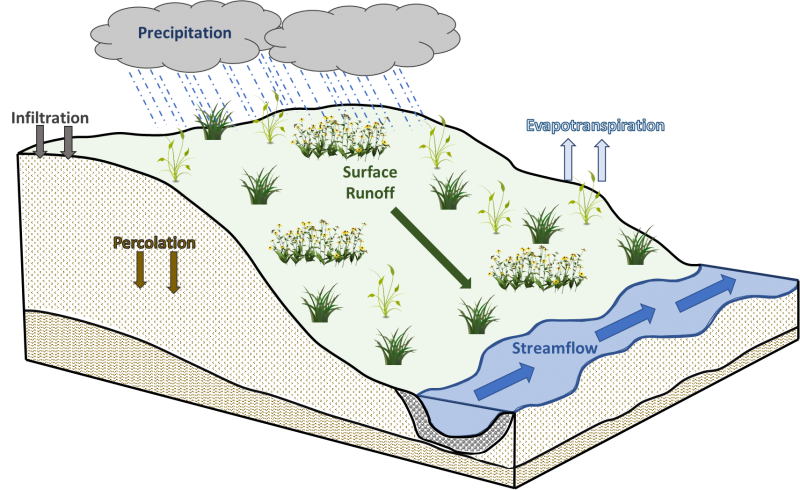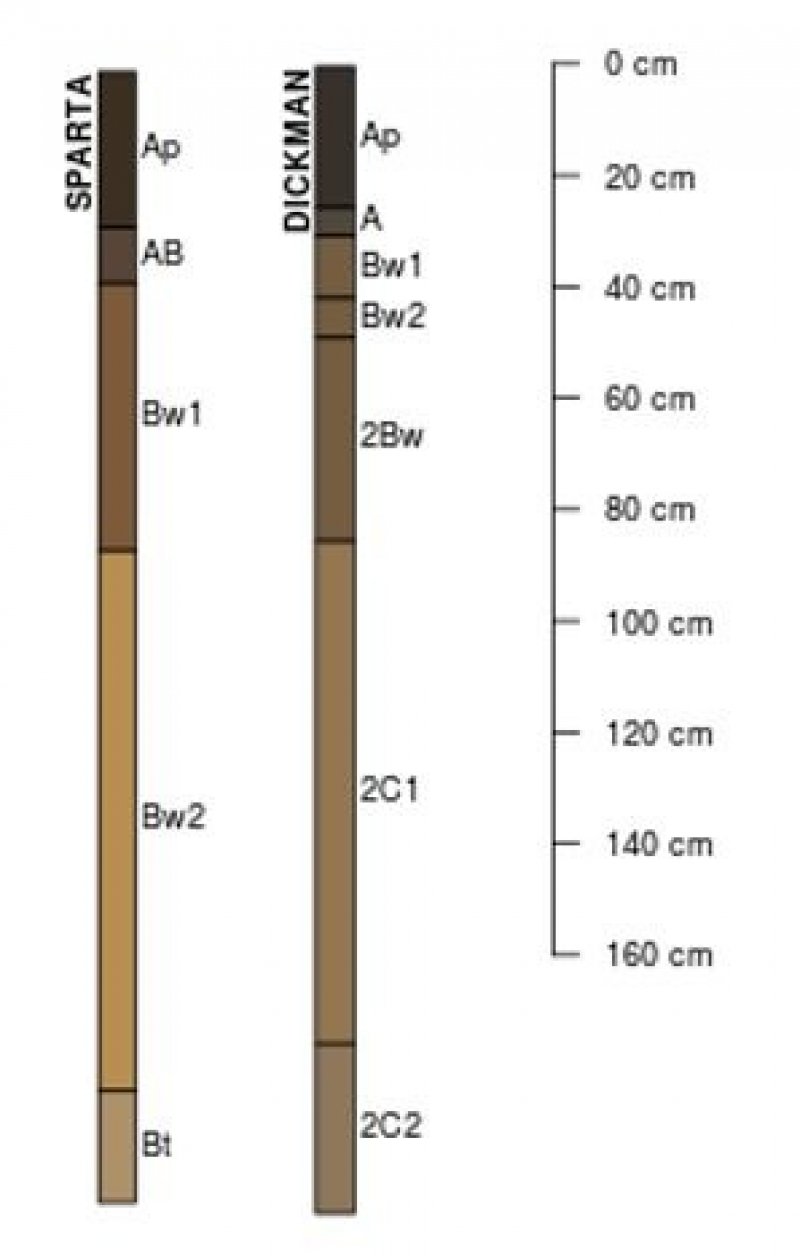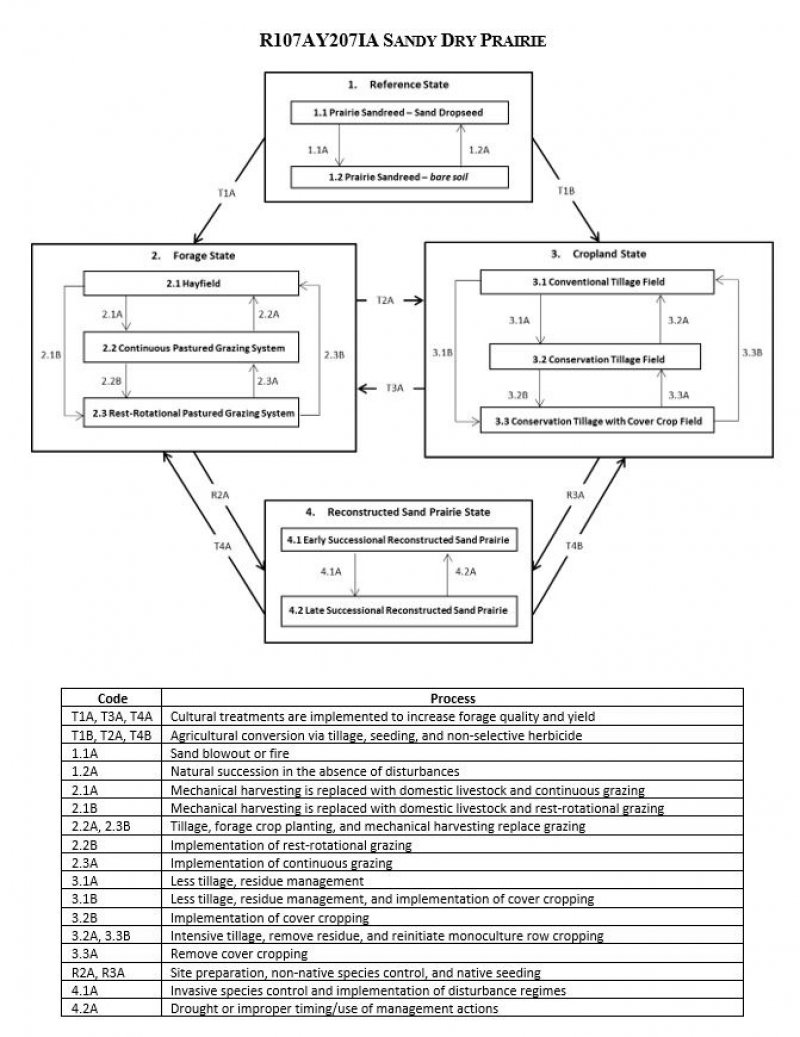
Natural Resources
Conservation Service
Ecological site R107XA207IA
Sandy Dry Prairie
Last updated: 5/21/2020
Accessed: 12/21/2025
General information
Provisional. A provisional ecological site description has undergone quality control and quality assurance review. It contains a working state and transition model and enough information to identify the ecological site.
Figure 1. Mapped extent
Areas shown in blue indicate the maximum mapped extent of this ecological site. Other ecological sites likely occur within the highlighted areas. It is also possible for this ecological site to occur outside of highlighted areas if detailed soil survey has not been completed or recently updated.
MLRA notes
Major Land Resource Area (MLRA): 107X–Iowa and Missouri Deep Loess Hills
The Iowa and Minnesota Loess Hills (MLRA 107A) includes the Northwest Iowa Plains, Inner Coteau, and Coteau Moraines landforms (Prior 1991; MDNR 2005). It spans two states (Iowa, 89 percent; Minnesota, 11 percent), encompassing approximately 4,470 square miles (Figure 1). The elevation ranges from approximately 1,700 feet above sea level (ASL) on the highest ridges to about 1,115 feet ASL in the lowest valleys. Local relief is mainly 10 to 100 feet. However, some valley floors can range from 80 to 200 feet, while some upland flats only range between 3 and 6 feet. The eastern half of the MLRA is underlain by Wisconsin-age till, deposited between 20,000 and 30,000 years ago and is known as the Sheldon Creek Formation. The western half is underlain by Pre-Illinoian glacial till, deposited more than 500,000 years ago and has since undergone extensive erosion and dissection. Both surfaces are covered by approximately 4 to 20 feet of loess on the hillslopes, and Holocene alluvium covers the till in the drainageways. Cretaceous bedrock, comprised of sandstone and shale, lies beneath the glacial material (USDA-NRCS 2006).
The vegetation in the MLRA has undergone drastic changes over time. Spruce forests dominated the landscape 30,000 to 21,500 years ago. As the last glacial maximum peaked 21,500 to 16,000 years ago, they were replaced with open tundras and parklands. The end of the Pleistocene Epoch saw a warming climate that initially prompted the return of spruce forests, but as the warming continued, spruce trees were replaced by deciduous trees (Baker et al. 1990). Not until approximately 9,000 years ago did the vegetation transition to prairies as climatic conditions continued to warm and subsequently dry. Between 4,000 and 3,000 years ago, oak savannas began intermingling within the prairie landscape, while the more wooded and forested areas maintained a foothold in sheltered areas. This prairie-forest transition ecosystem formed the dominant landscapes until the arrival of European settlers (Baker et al. 1992).
Classification relationships
U.S. Forest Service Ecological Subregion: North Central Glaciated Plains (251B) Section, Northwest Iowa Plains (251Bd) Subsection (Cleland et al. 2007)
U.S. EPA Level IV Ecoregion: Loess Prairies (47a) (USEPA 2013)
National Vegetation Classification – Ecological Systems: North-Central Interior Sand and Gravel Tallgrass (CES 202.695) (NatureServe 2015)
National Vegetation Classification – Plant Associations: Schizachyrium scoparium – Hesperostipa spartea – Bouteloua (curtipendula, gracilis) Sand Grassland (CEGL005204) (NatureServe 2015)
Biophysical Setting: North-Central Interior Sand and Gravel Tallgrass Prairie (3914120) (LANDFIRE 2009)
Natural Resources Conservation Service – Iowa Plant Community Species List: Prairie, Northern Little Bluestem Gravel (USDA-NRCS 2007)
Iowa Department of Natural Resources: Sand Prairie (INAI 1984)
Minnesota Department of Natural Resources: Ups 13a Dry Barrens Prairie (Southern) (MDNR 2005)
Ecological site concept
Sandy Dry Prairies are located within the green areas on the map (Figure 1). They occur on upland flats and hillslopes and on outwash plains on stream terraces. Soils are Mollisols and Inceptisols that are moderately well to somewhat excessively-drained and deep, formed in eolian sediments. Due to the dominantly northwest winds of the MLRA and the eolian nature of the parent material, this ecological site most often occurs on the east side of major rivers. Soils are poorly developed with limited water- and nutrient-holding capabilities, resulting in a sparsely vegetated plant community.
The historic pre-European settlement vegetation on this site was dominated by herbaceous species tolerant of xeric conditions and low soil fertility. Prairie sandreed (Calamovilfa longifolia (Hook.) Scribn.) and sand dropseed (Sporobolus cryptandrus (Torr.) A. Gray) are the dominant species of Sandy Dry Prairies. Other grasses that may occur include little bluestem (Schizachyrium scoparium (Michx.) Nash), sideoats grama (Bouteloua curtipendula (Michx.) Torr.), and porcupinegrass (Hesperostipa spartea (Trin.) Barkworth) (MDNR 2005). Species typical of an undisturbed plant community associated with this ecological site include plains muhly (Muhlenbergia cuspidata (Torr. ex Hook.) Rydb.) and aromatic aster (Symphyotrichum oblongifolium (Nutt.) G.L. Nesom) (Drobney et al. 2001; MDNR 2005; NatureServe 2015). Shrub cover is sparse and, when present, typically included prairie rose (Rosa arkansana Porter). Fire and sand blowouts are the primary disturbance factors that maintain this site, while periodic drought and herbivory are secondary factors (Lesica and Cooper 1999; LANDFIRE 2009).
Associated sites
| R107XA209IA |
Wet Upland Sedge Meadow Loess or loamy sediments on uplands (slopes less than two percent) that are shallow to the water table including Gillett Grove, Letri, Marcus, Rushmore, and Spicer |
|---|---|
| R107XA206IA |
Outwash Upland Prairie Glacial outwash on outwash plains including Allendorf, Estherville, Hawick, Kanaranzi, Kanaranzi variant, Kato, May City, Salida, and Wadena |
| R107XA201IA |
Loess Upland Prairie Calcareous glacial till on uplands including Moneta and Steinauer |
| R107XA205IA |
Loamy Sediment Upland Prairie Loamy sediments on uplands including Bolan, Bolan variant, Dickman, Everly, Fostoria, and Ocheyedan |
Similar sites
| R107XA202IA |
Calcareous Till Upland Prairie Calcareous Till Upland Prairies are derived from glacial till that is shallow to calcium carbonates and have a higher pH |
|---|---|
| R107XA205IA |
Loamy Sediment Upland Prairie Loamy Sediment Upland Prairies are derived from fine-loamy sediments |
| R107XA206IA |
Outwash Upland Prairie Outwash Upland Prairies are derived from glacial outwash |
| R107XA201IA |
Loess Upland Prairie Loess Upland Prairies are derived from loess and have a higher soil fertility that supports greater vegetative cover, productivity and species composition |
Table 1. Dominant plant species
| Tree |
Not specified |
|---|---|
| Shrub |
Not specified |
| Herbaceous |
(1) Calamovilfa longifolia |
Click on box and path labels to scroll to the respective text.
